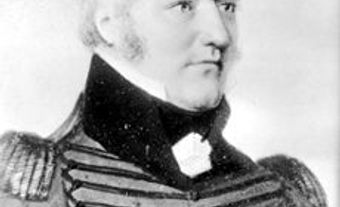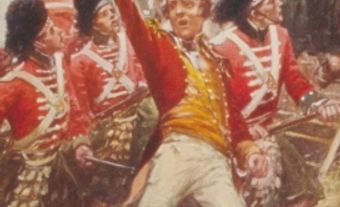Battle of Crysler's Farm
This decisive land battle in the War of 1812 was fought on 11 November 1813 on a farmer's field between Morrisburg and Cornwall, Ont, along the shores of the St. Lawrence River. The Battle of Crysler's Farm was the Americans' last attempt at capturing Montréal, and it was considered by many to be a disastrous defeat for their army.
Encampment at Crysler's Farm
Under the command of American General James Wilkinson, an impressive flotilla of well-armed ships had been making their way down the St. Lawrence to combine forces with General Wade Hampton, who was marching toward Montréal from the south. Suffering illness and incapacitated by the heavy use of the medicine laudanum, Wilkinson remained on board his ship and delegated authority over cavalry, artillery and approximately 2500 infantry to Brigadier-General John Parker Boyd, a senior but thinly respected officer from Massachusetts.
Boyd's troops were doggedly pursued by a significantly smaller British force led by Lieutenant Colonel Joseph Wanton Morrison. After constant pressure from Canadian Voltigeurs and Tyendinaga Mohawks under Morrison's command, Boyd finally turned his army to confront them. On 10 November, he set up headquarters at a local tavern. Meanwhile, Morrison set up camp less than two kilometres east of Boyd's position, at the home of John Crysler, a wealthy Loyalist and captain in the Dundas militia. Many of Morrison's men slept outside that night, with little protection from the sleet and rain.
The Battle
British light troops began an attack on the American position the following day, but were driven back. American attempts to cross the field were also quashed, as infantry were overpowered by volleys from the well-trained and practiced muskets of the British 49th and 89th Regiments of Foot, which made up the bulk of Morrison's army.
Morrison had tactical advantage during the skirmish. The Americans were forced to trudge through two large ravines to reach the field, which was itself inconveniently decorated with split-rail fences and wedged between a pine forest marsh and the St. Lawrence. On the river, a small flotilla of gunboats under Captain William Mulcaster backed the British position.
Meanwhile, Boyd's contradictory and inconsistent leadership exacerbated the confusion and lack of discipline among the American infantry. By the time American artillery and cavalry arrived, most of the soldiers had begun to retreat, their ammunition spent. While the American artillery did have a devastating effect, they were unable to overcome the well-coordinated efforts of British artillery and musketry, or their bayonets. Boyd eventually called a retreat, an order Wilkinson later denied issuing, and the American troops moved to French Mills for the winter, ending the year's campaign on a sour note.
American Defeat at Crysler's Farm
Wilkinson later attempted to claim Crysler's Farm as an American victory, but his career, already in disrepute, was severely tarnished by what most saw as a bungled, ignominious defeat. Against a combined British force of no more than 2400 men, Boyd recorded approximately 340 killed and wounded and 100 captured. Morrison's troops also suffered from this bloody encounter, with estimates on casualties ranging from 180 to about 200. Despite these losses, British army surgeon William "Tiger" Dunlop described Morrison's victory as "a very brilliant little affair."

 Share on Facebook
Share on Facebook Share on X
Share on X Share by Email
Share by Email Share on Google Classroom
Share on Google Classroom




